The most pressing question hovering over the spectacular 18th fairway at Pebble Beach Golf Links last Sunday afternoon was whether such mass elegance could ever be matched again. In addition to crowning a new Best of Show at the world’s most important Concours d’Elegance, two of the last three Peninsula Classics Best of the Best winners were there, plus 38 former Pebble Beach winning cars.
The crowd at the Pebble Beach Concours d’Elegance is always a who’s who of automotive Concours event participants, but when Monterey Car Week was canceled in 2020, the concept of bringing back the previous winners offered the potential for the 39 winners that have held the title of "Best of Show" at the Pebble Beach Concours d'Elegance, all in one place, will be very hard to top.
Firstly, the 70th car to join the ranks of winners of the Best of Show Award is a 1938 Mercedes-Benz 540K Autobahn Kurier. Essentially built with the same mechanicals that are used on the Mercedes-Benz 540K Special Roadster, it might be a surprise to readers that in the 70-year history of the event, a Mercedes-Benz 540K Special Roadster has never won a Pebble Beach Best of Show. The predecessor to the Mercedes-Benz 540K Special Roadster, the 500K Special Roadster, won it twice (1982 and 1986), and a 540K Special Cabriolet A won in 1973.
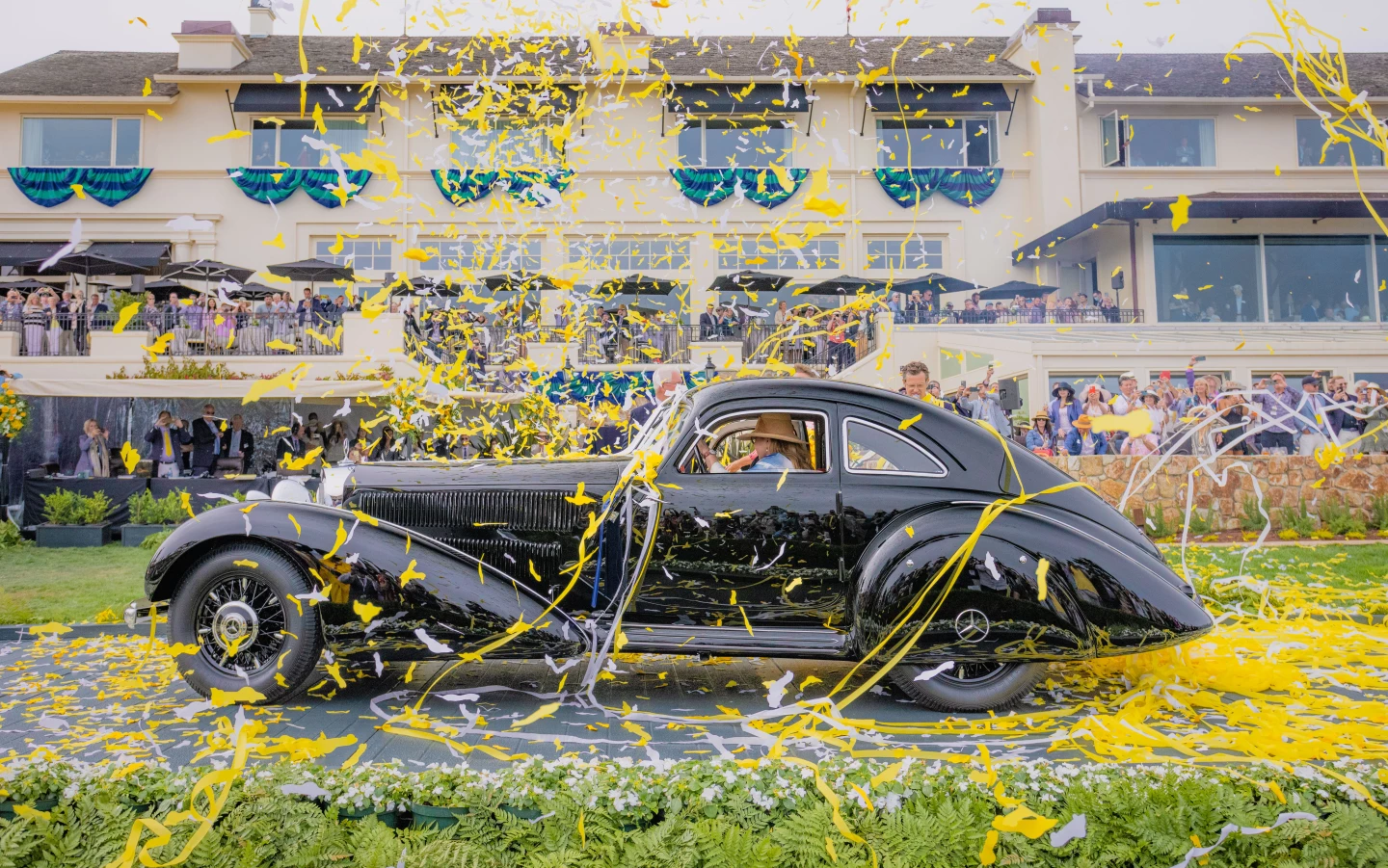
The winning Mercedes-Benz 540K Autobahn Kurier is one of two built, the only one extant, has featured in New Atlas previously when it won the Amelia Island Concours in 2019 and it is the third time that Arturo Keller has won at Pebble Beach, coming after a 1986 win with their 1936 Mercedes-Benz 500K Special Roadster and a 2001 win with their 1930 Mercedes-Benz SS Erdmann & Rossi Roadster. The Autobahn Kurier was last restored in 2006, and has continued to be shown, rallied, and toured since then. The Kellers also go home with the Elegance in Motion Trophy and we have half a dozen images of the sleek black missile in this gallery and there are more in the gallery from the Amelia Island Concours in 2019.
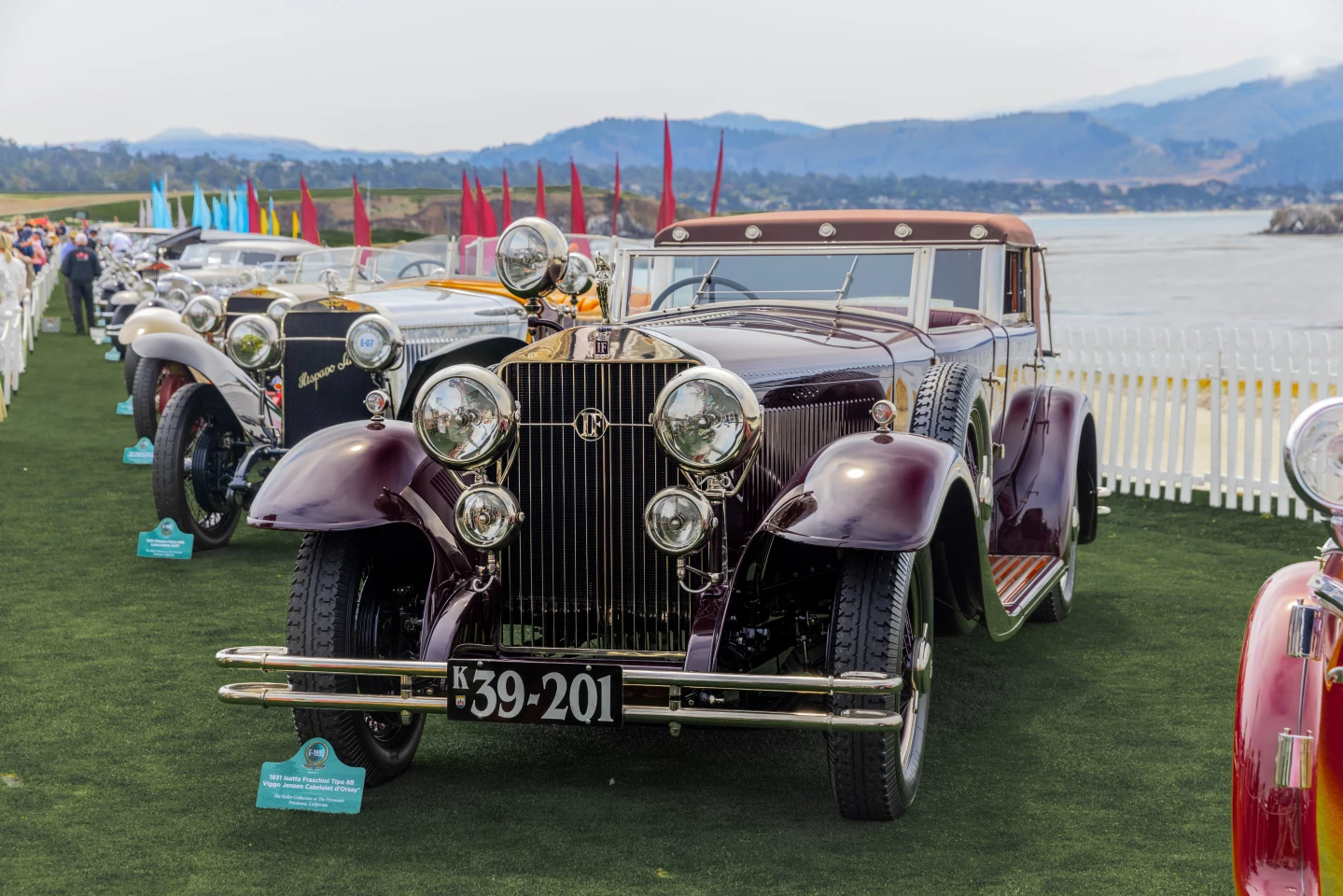
Arturo Keller obviously has a thing for cars that have won the Pebble Beach Concours d’Elegance Best of Show. Apart from his three personal victories, he has also purchased four other cars that have won the Best of Show title, so the Keller Collection now includes seven previous winners. The additional cars which were also exhibited in the prior winners class this year were a 1927 Mercedes-Benz S Tourer (1971 winner), a 1922 Hispano-Suiza H6B Labourdette Skiff Torpédo (1972 winner), a 1922 Hispano-Suiza H6B Labourdette Skiff (1989 winner) and a 1931 Isotta Fraschini Tipo 8B Viggo Jensen Cabriolet d’Orsay (1995 winner – pictured directly above).
Performing the impossible on a regular basis
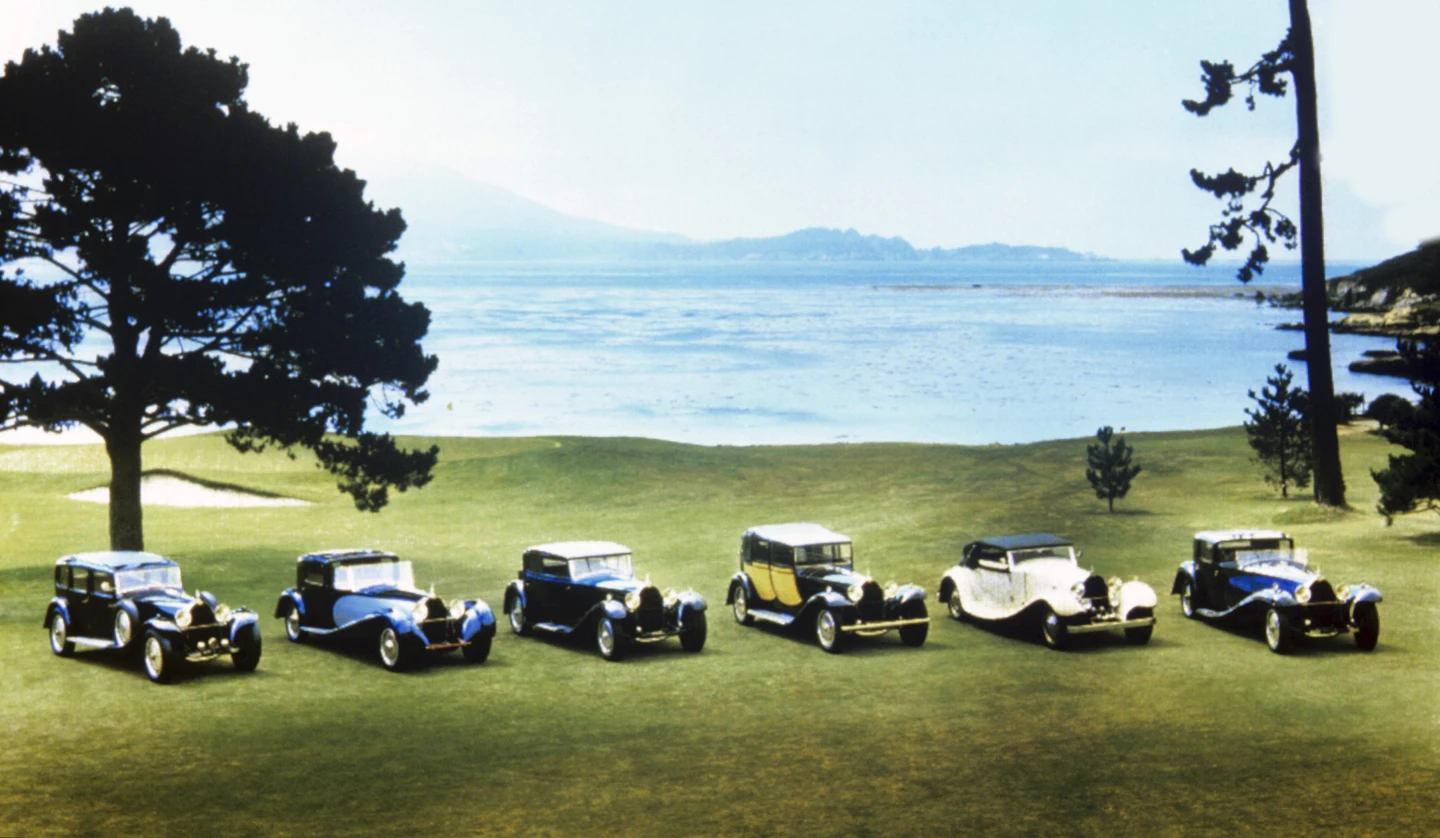
The Pebble Beach Concours regularly manages to pull off the impossible by drawing together a group of priceless cars from deep within European museums and obscure and very private collections.
One of the greatest organizational feats in concours history was achieved in 1985 when the Pebble Beach Concours managed to draw together all the Bugatti Type 41 Royales ever produced. It's the only previous feat that comes close to this year's achievement of 38 Pebble Beach winners.
Such is the influence of the Pebble Beach Concours, that within 12 months of that Royale get-together in August 1985, a 1931 Bugatti Royale Berline de Voyager (the Yellow car third from right in the above image) sold for US$6,500,000 at a Kruse auction in Reno Nevada, the highest price ever paid for a car at that time. In November 1987, the 1931 Bugatti Royale Kellner Coupe (far right in above image) sold for GBP£5.5 million (US$9.8 million) at a Christie’s auction at the Royal Albert Hall in London, setting a world auction record that would stand for 22 years, though it was bid to $11.5 million at auction in 1989 but failed to meet reserve and it broke its own outright price record for the sale of a motor car when it sold privately for $15.7 million in 1990.
Have no doubt that the Pebble Beach Concours d'Elegance is very close to the center of gravity of the massive global collector car industry, and the vision and organizational capacity of that role is in safe hands.
The Best of Show Nominees
Being a Best of Show Nominee in the world’s most important Concours d’Elegance is roughly the equivalent of a Silver Medal in a marquee event at the Olympics – but for a millimeter here or there, any one of these cars would have been a worthy champion. No order is given for the Nominees, so they’re all effectively in second place.
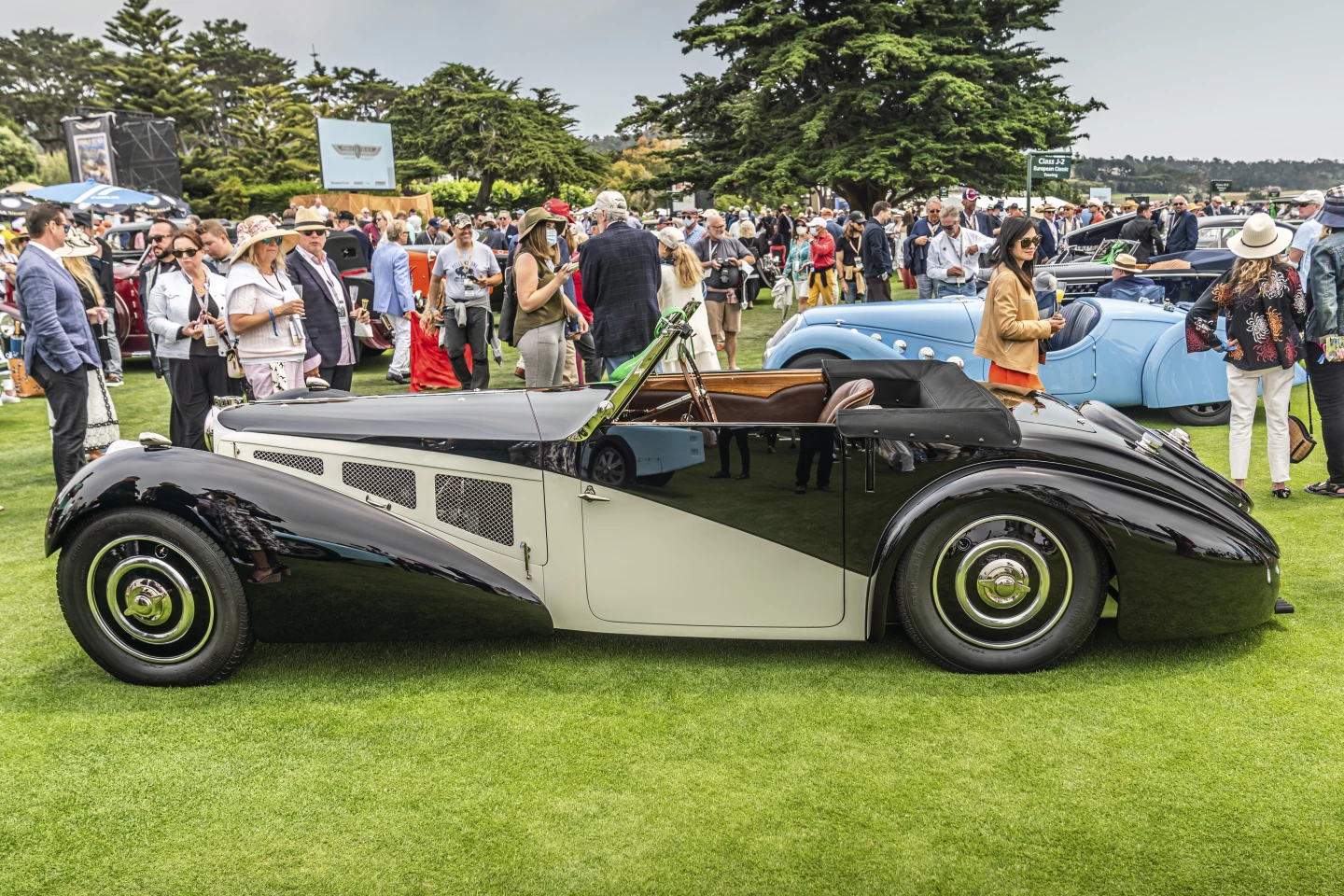
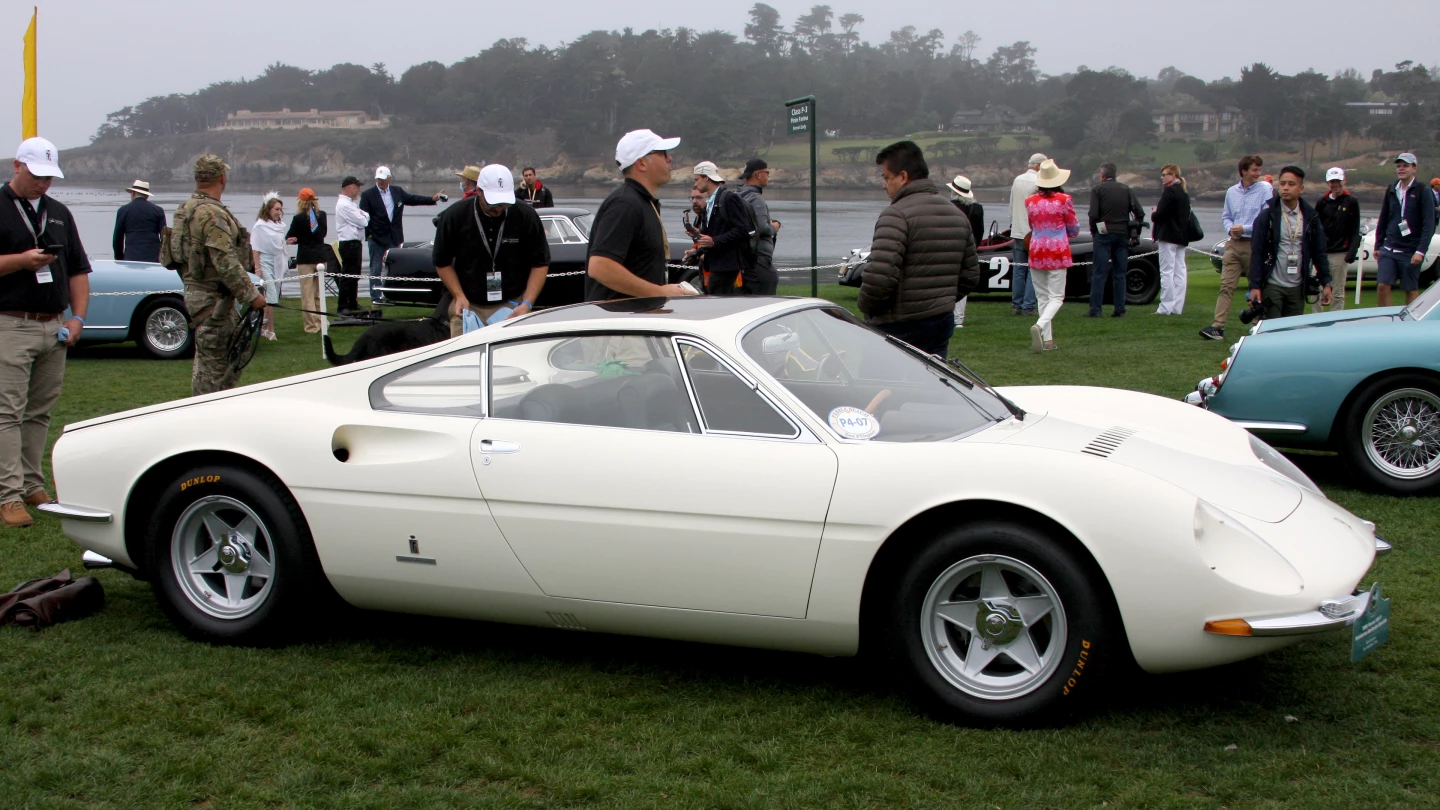
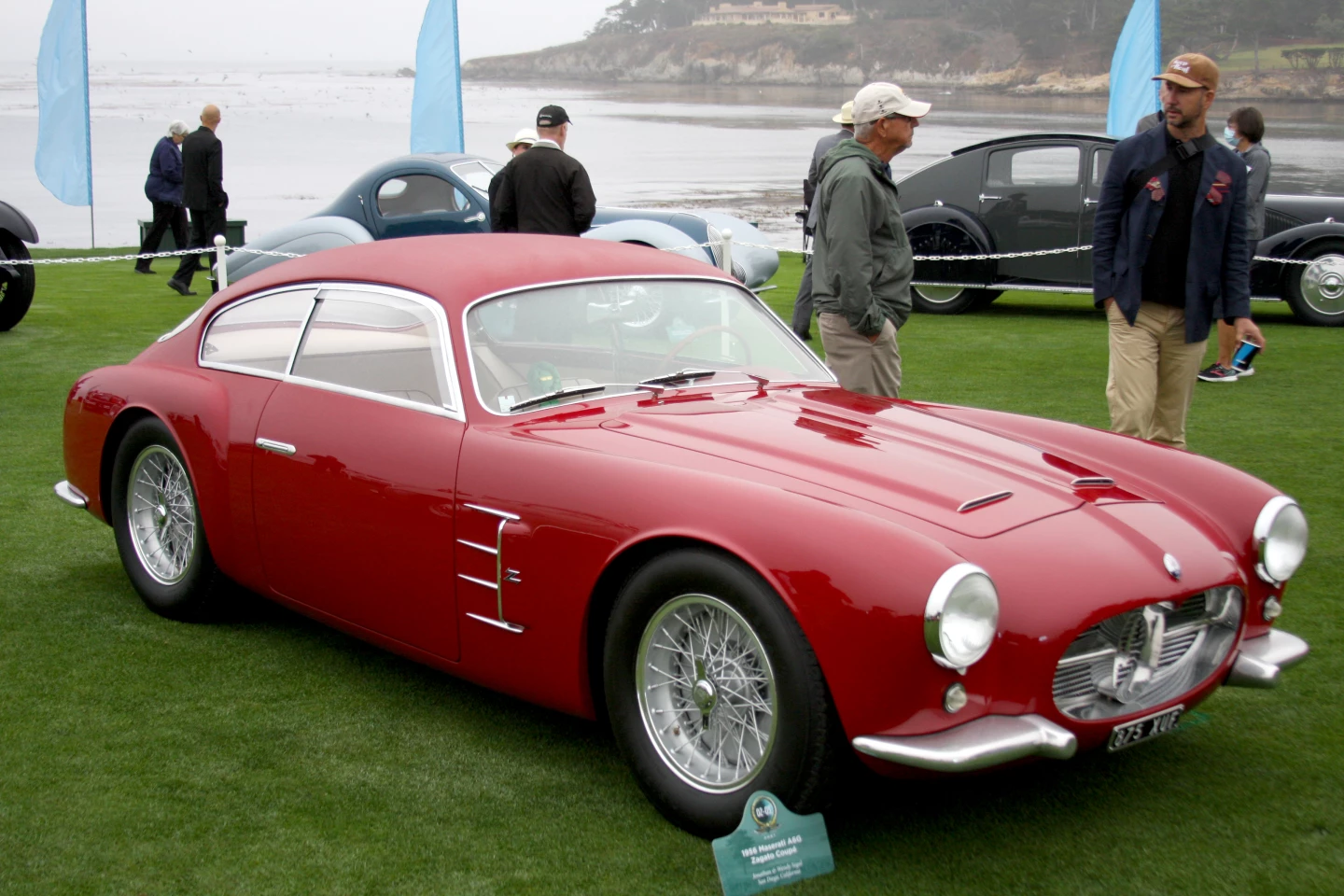
J.B. & Dorothy Nethercutt Most Elegant Closed Car

The 1936 Bugatti Type 57SC Atlantic from the Mullin Automotive Museum collection was named “J.B. & Dorothy Nethercutt Most Elegant Closed Car” at Pebble Beach Concours d’Elegance.
The museum’s 1936 Bugatti Type 57SC Atlantic and 1935 Voisin Type C25 Aerodyne were included in a special exhibition of former “Best of Show” winners to celebrate the event’s 70th anniversary. The Bugatti took out Best of Show in 2003, and the Voisin took that honor in 2011.
The first of only four produced and one of three survivors, the Jean Bugatti-designed Atlantic is considered by many to be the most elegant automobile ever crafted and is often nicknamed the “Mona Lisa” of cars. This example is the only surviving “Aéro Coupé,” a designation given to the first two cars which were mechanically very similar to the aérolithe.
Delivered new in 1936 to Britain’s Nathaniel Mayer Victor Rothschild, third Baron Rothschild, the Atlantic has had only a handful of owners in its 80-year history. The vehicle is co-owned by Peter and Merle Mullin and Rob and Melani Walton but resides under the care of the Mullin Automotive Museum.
If Ferrari is the most prestigious marque ...

One of the most interesting aspects of this year’s win for Mercedes-Benz was pointed out in the official press release, which noted that Mercedes-Benz had now drawn level with Bugatti for the number of "Best of Show" awards at Pebble Beach with nine wins apiece. We checked out all previous results and found that the honor board offered some fascinating insights.
Beyond Bugatti and Mercedes-Benz at nine wins apiece, the scorecard gives the all-time bronze medallion to Duesenberg (6 wins), ahead of Rolls-Royce (5), Packard (4), Alfa Romeo (3), Daimler (3), Delage (3), Isotta Fraschini (3), Jaguar (3), Bentley (2), Chrysler (2), Horch (2), Pierce-Arrow (2) and Voisin (2).
That list accounts for all the marques that have ever won more than once and eagle-eyed readers will no doubt recognize a significant name missing from that list. That's correct, Ferrari has won "Best of Show" at the Pebble Beach Concours d'Elegance only once.
The other marques with one win are Austin-Healey, Cunningham, Delahaye, duPont, Edwards, Hispano-Suiza, Lancia, Maserati, Minerva and Talbot-Lago.
Unlike those marques though, Ferrari accounts for seven of the 10 most valuable cars ever sold at auction, 59 of the top 100 sold at auction and more than half of the top 1,000. Ferrari's domination of the collector car marketplace is overwhelming.
So why did it take 64 years for Ferrari's first and only win at Pebble Beach?
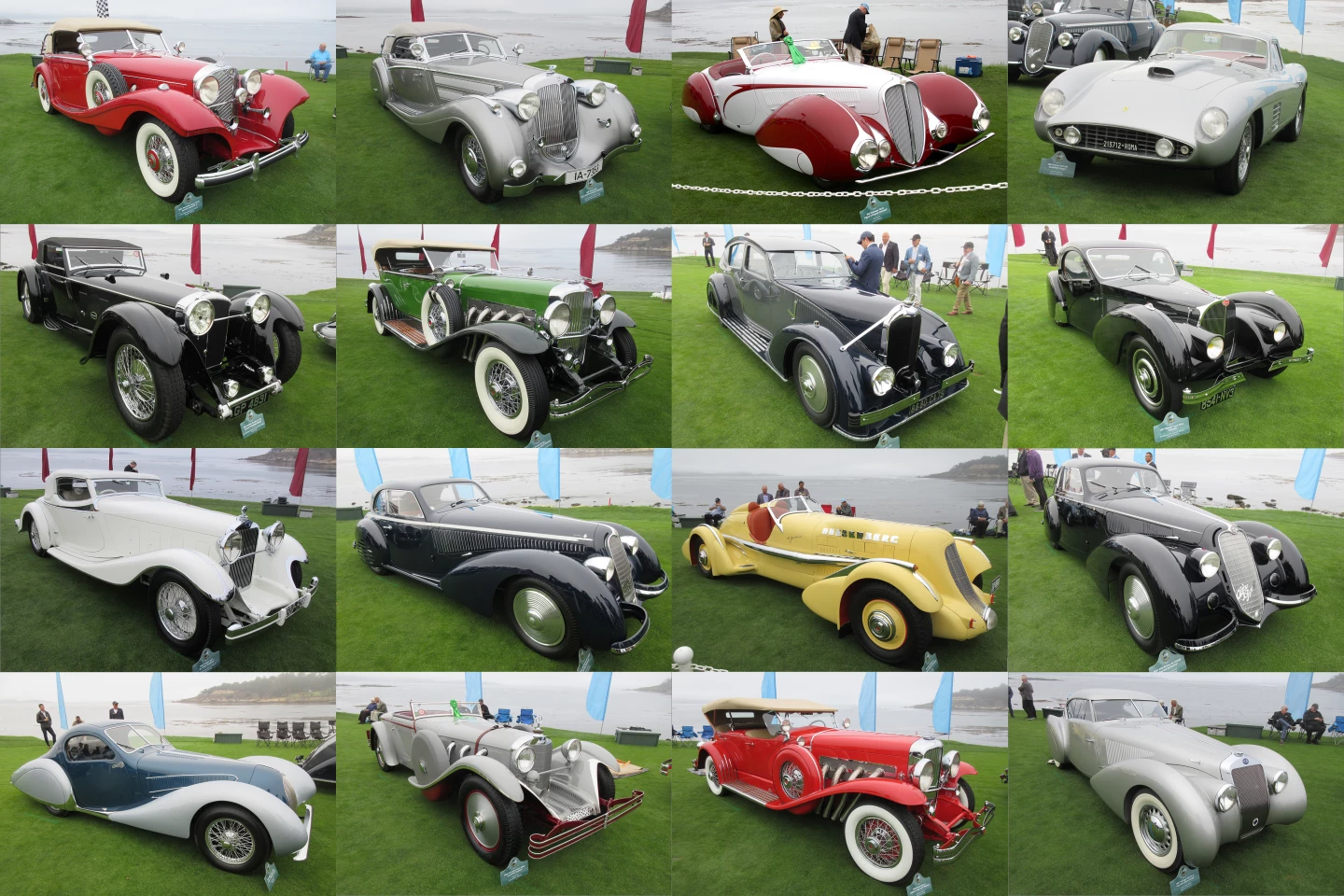
By comparison, the Peninsula Classics Best of The Best Award (an award we have consistently acclaimed as the world championship of concours cars) has now been running for six years, and the score is two wins for Ferrari, with one each for Alfa Romeo, Bugatti, Maserati and Talbot-Lago. That result seems more in line with the collective wisdom of the world's automobile collectors displayed each year at elite auctions.
For the record, the marque breakdown of the 100 most valuable cars ever sold at auction is Ferrari (59), Mercedes-Benz (8), Bugatti (6), McLaren (5), Aston Martin (4), Alfa Romeo (3), Ford (3), and Jaguar (3).
Now the most expensive does not mean the most elegant, but Ferrari's principal tailor, Pininfarina, is not known for creating ugly cars.
In concluding this topic, we have no explanation why the most valuable collector marque on the planet is so statistically underrepresented at the world’s most important concours event.
La Carrera Panamericana Class
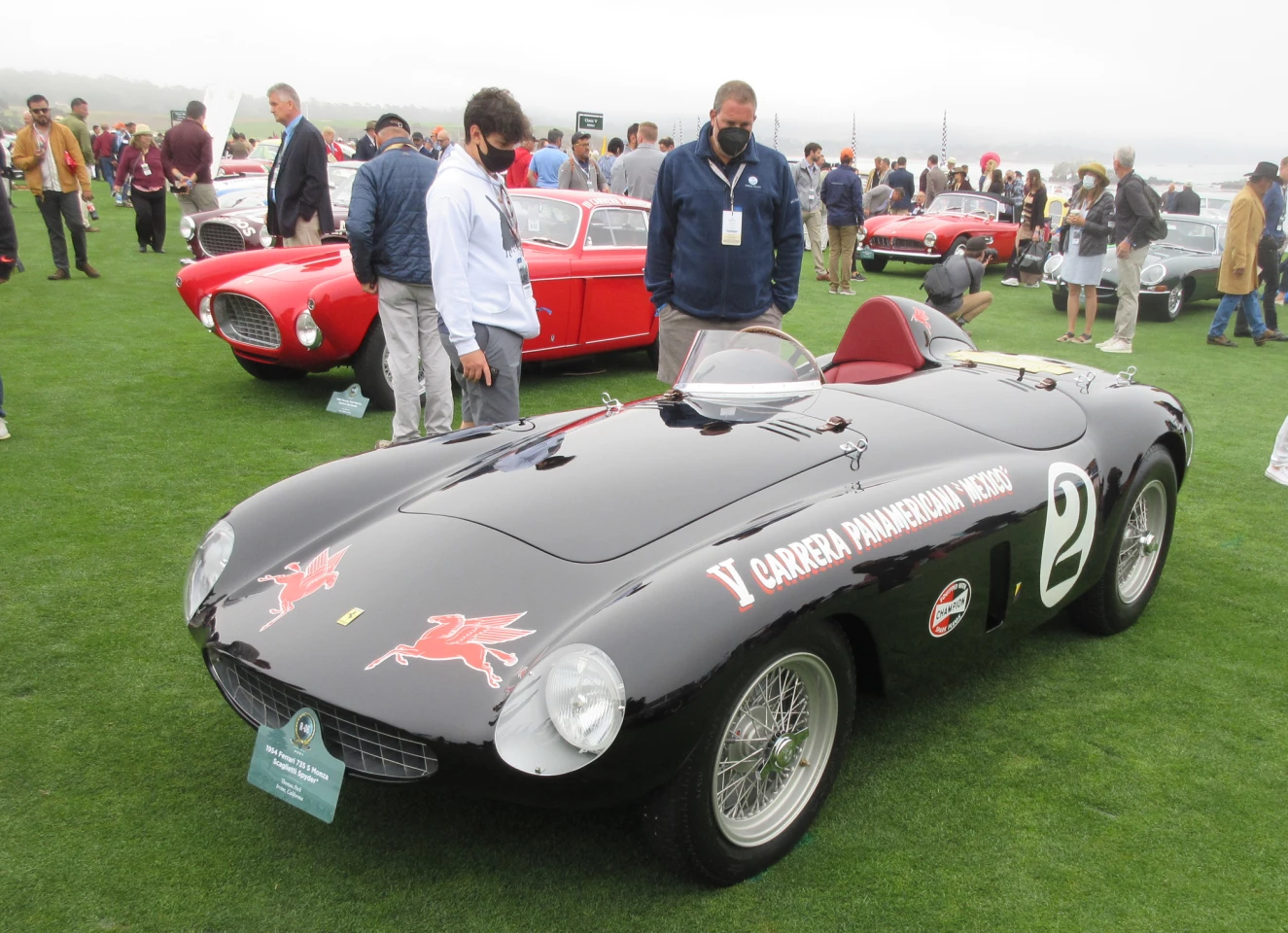
Which brings us to the most recent winner of The Peninsula Classics Best of The Best Award, the 1954 Ferrari 750 Monza that we featured in our coverage of the Quail this year. The gorgeous Monza is no stranger to Pebble Beach, having taken out the Enzo Ferrari Award at the 2019 Pebble Beach Concours d’Elegance, before winning the 2020 Best of Show at the Cavallino Classic, making it one of the elite few eligible to win the 2020 Best of the Best Award and ultimately becoming the de facto world championship concours car.
The Ferrari 750 Monza was on hand to display (rather than compete) in the La Carrera Panamericana Class. There were 12 cars at Pebble Beach that had competed in the notorious Carrera Panamericana, six for display purposes, and six competitors in the class.
If you're not familiar with the event, La Carrera Panamericana was a border-to-border car race held in Mexico from 1950 to 1954. It was very similar to the Mille Miglia or Targa Florio held in Italy, though organizational integrity was lax, roads weren't always closed and many deaths, both acknowledged and unacknowledged, occurred. The race achieved such international importance that the world's top sports car producers were compelled to join in, despite it being one of the most dangerous competitions in modern history.
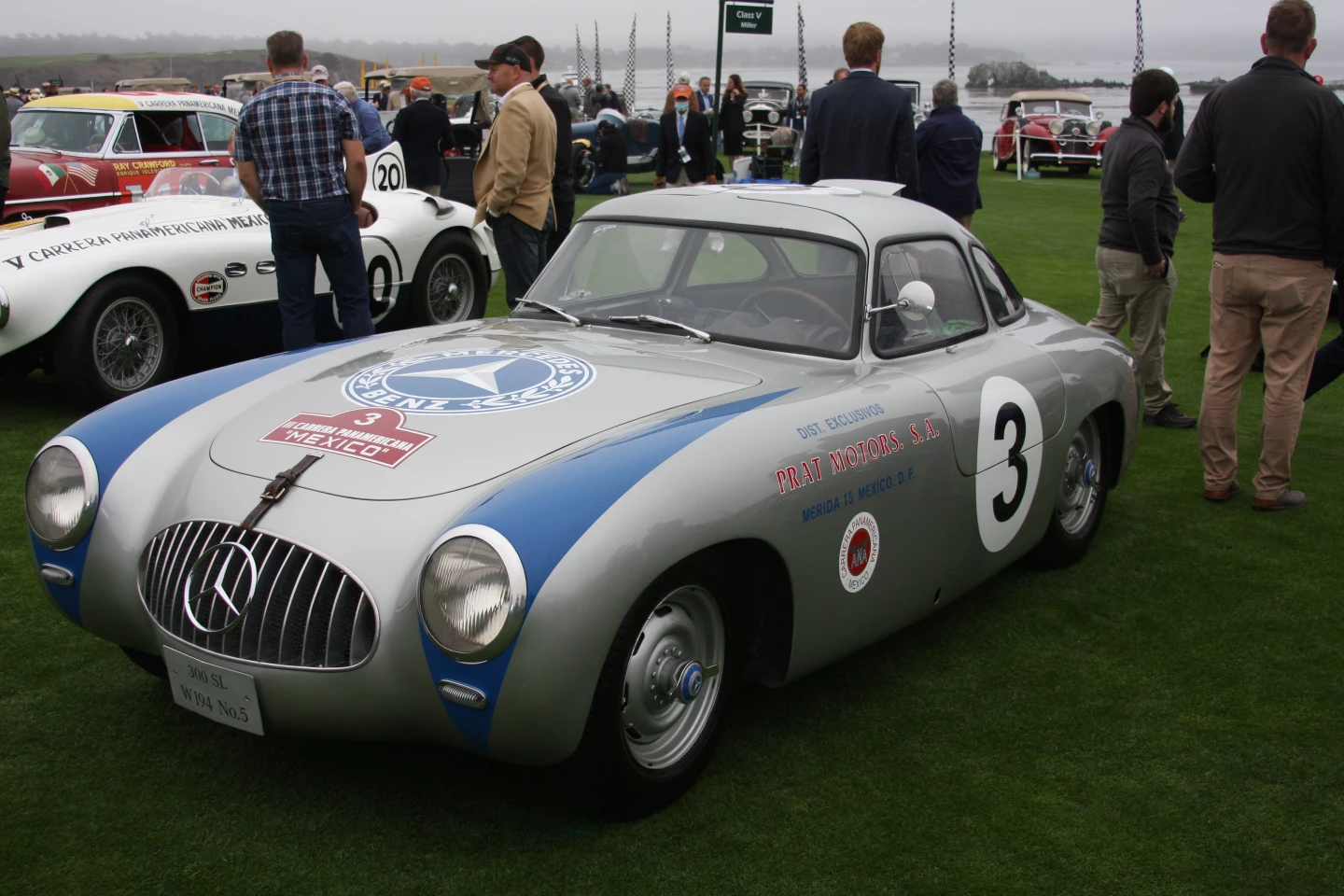
The Isle of Man TT Motorcycle races and the Paris-Dakar (now Dakar Rally) have both killed more competitors than the Mexican race over their long histories, but La Carrera Panamericana was flawed in almost every respect. When the Mexican section of the Pan-American Highway was completed in 1950, the Mexican Government organized a nine-stage, five-day race across the 2,178-mile (3,507-km) north-south roadway, beginning at the border with Texas and finishing on the Guatemalan border.
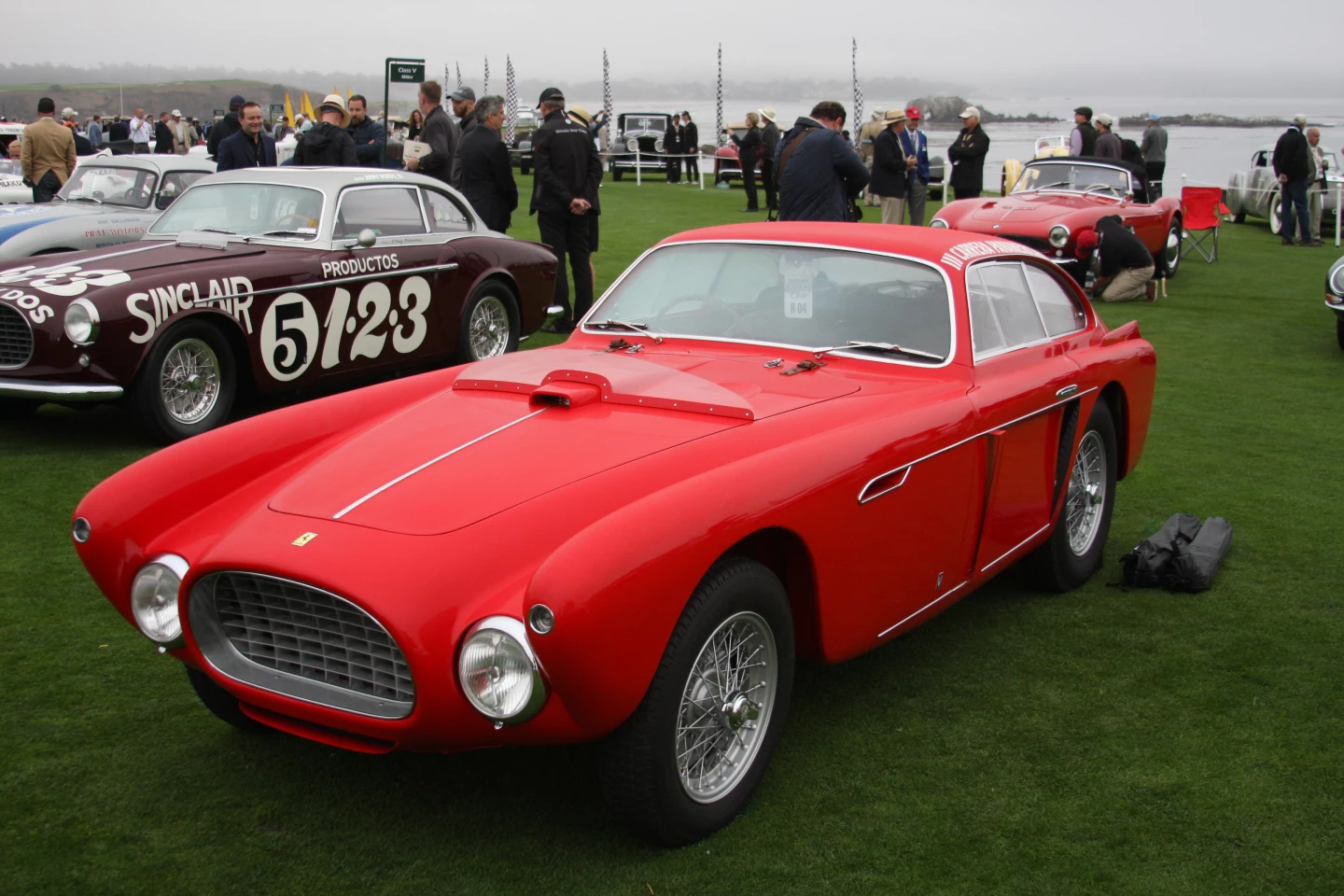
In the first year of the race, 1950, the winning car averaged 126.2 km/h (78.4 mph) for just over 27 and a half hours of driving to cover the 3,000+ kilometers, with the winning speed climbing to 141.7 km/h (88.0 mph) in 1951, 165.1 km/h (102.6 mph) in 1952, 169.2 km/h (105.2 mph) in 1953 and 173.7 km/h (107.9 mph) in 1954.
By 1954 the speed of the race was beyond ridiculous. The final 365-km (227-mile) stage of the event was won by Italian Umberto Maglioli in a works Ferrari 375 Plus at an average speed of 222 km/h (138 mph). The story is fascinating and Wikipedia has a great summary, but racing on public roads is sheer madness.
The early electric car class
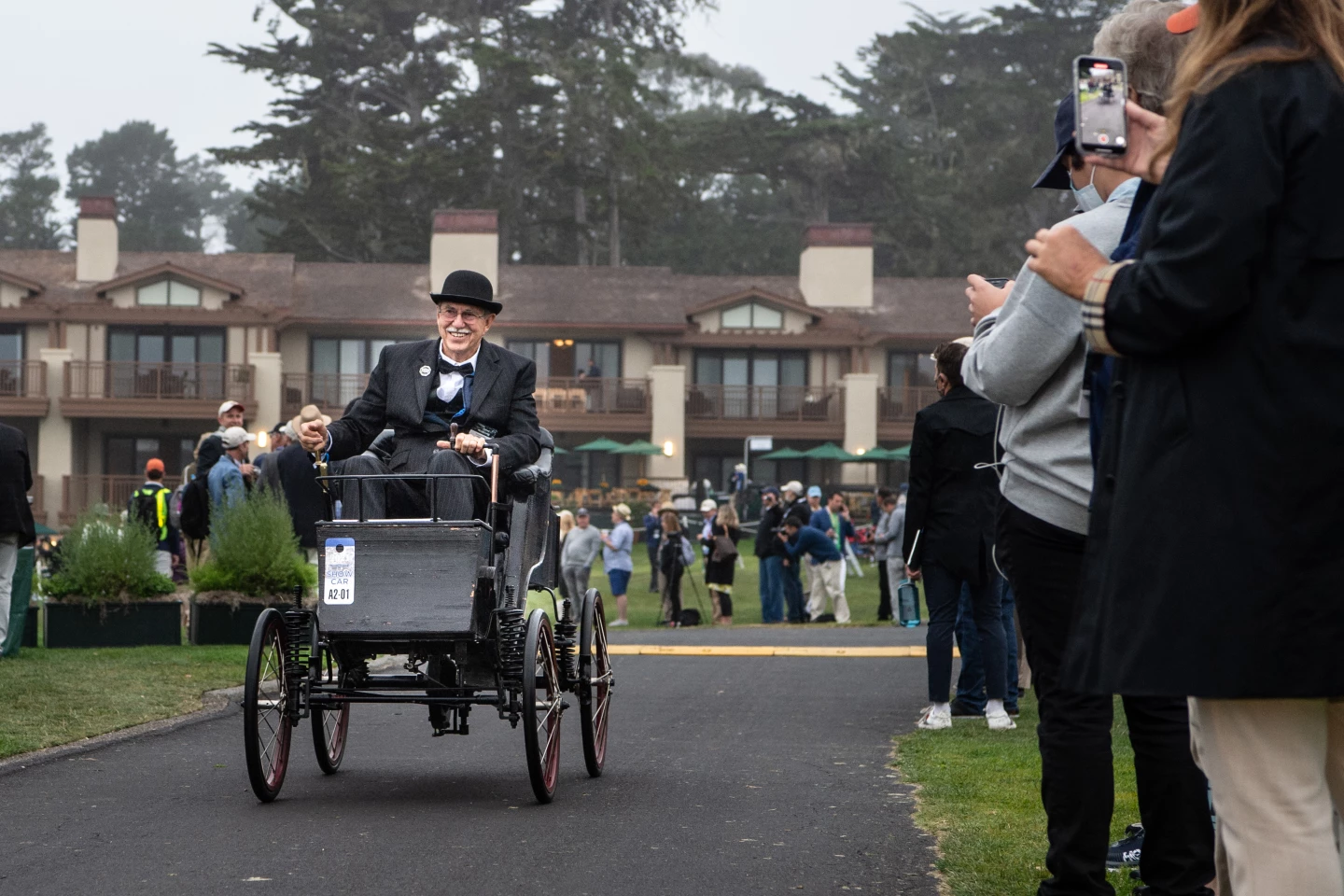
One hundred and twenty years ago, both steam and electric cars offered viable alternatives to the internal combustion engine as the future of automobiles. In America, the Stanley Motor Carriage Company produced fast and reliable steam-engined cars from 1902 onwards and Andrew L. Riker's Riker Electric Vehicle Company was the main proponent of the electric vehicle.
Riker used one of his early prototypes to win what is arguably the first automobile race on American soil in1896, and he was a prominent figure in setting the stage for the Century of the Automobile. Riker was a co-founder of the Society of Automotive Engineers and after selling his company in 1901, he moved to Locomobile where he had much success designing internal combustion engines and ICE vehicles.

America is now home to the most important EV manufacturer on the planet (Tesla), but its early EV history is just as rich and colorful. Several Columbias from more than a century ago were present, with a 1905 Columbia Mark XXXV taking second in class and a 1901 Columbia Mark XXXI taking third in class. The winner in such remarkable company obviously had to be pretty special, and it was: the 1912 Rauch & Lang Brougham was formerly the personal vehicle of no less than America's greatest inventor, Thomas Edison. Pebble Beach is like that. Every car has a story. Every car, when you ask, has a tale that unravels a journey of discovery and wonder.
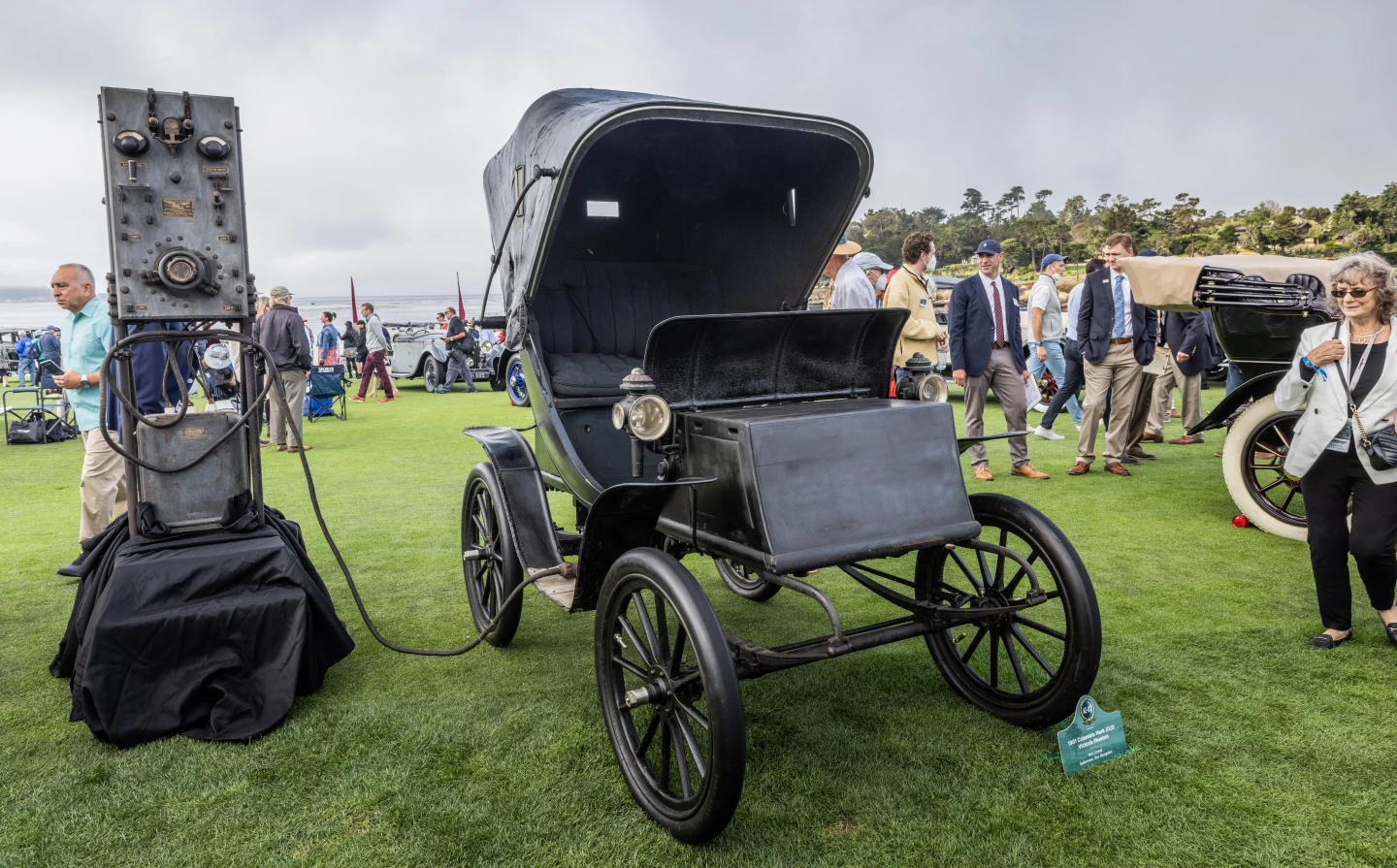
The above vehicle didn't even run a place, yet it probably provided more visual fascination than any others in the class.
We hope you enjoy the image gallery for this story.

































































